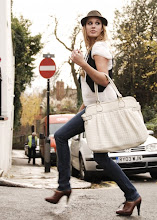
For the last twenty years, one discussion has dominated mountaintop bars everywhere – which is better: skiing or snowboarding? Taking all things into consideration, we’re having a look at the contributing factors that charge this debate – with a conclusion that will no doubt continue to be argued, for many years to come.
Easiest for beginners
For beginners, skiing will take a few days of muscular control and good coordination to master the basics. As a technical sport, it takes an understanding of how your body works to get into the right rhythm, and having individual sticks attached to your feet will cause a great deal of frustration at first, particularly when trying to get up after a fall. Snowboarding can generally be easier to pick up, due to having less equipment to manage and just one board to control. Having said this, without the use of ski poles, it can become annoying when trying to move on flats.
Possesses the cool factor
For years, snowboarding has possessed the cool factor, and riders have dominated the pipe and park with gnarly tricks: 720s, McTwists, nose presses, and more. So as snowboarding became fresh and trendy, skiing began to date. However, in recent years, skiing has become cool again. As TJ Schiller performed a 1440 (4 spins) at the US freeskiing open, and the sheer velocity of the sport physically beats snowboarding every time, it’s become enough of an incentive for people to get back on two planks. Freestyle skiing seems to be the future of the sport and currently appears to have the edge.
Has the comfiest kit
In terms of comfort – both in the gear and on the lifts – it can be a bit of a toss-up. Snowboarding offers the comfortable ‘trainer’ style boots that can easily be manoeuvred in comparison to the awkward ski boots, in which you can acquire a definite swagger. Having less equipment is also handier when you wipeout, as there’s less to worry about finding, but the experience on the ski lift has to be won by the skiers. Just having the ability to separate your legs to sit down means that the feel is much more comfortable and the likelihood of falling is greatly reduced.
Will give me a better workout
The fitness factor is one that can’t be ignored. Where both sports require regular bouts of intense effort, and work essential core muscles equally, it appears that each sport excels in different ways. For example, snowboarding slightly takes the edge by burning a few more calories per hour than its competitor, whereas skiing creates toned legs and bums much quicker. Snowboarding is more of an entire body sport, working the calves and shins hard to facilitate the “heel-toe” motion, as well as the lower back and abs to keep the torso rotating. Generally, the steeper the slope, the better workout you will get from skiing – particularly on the thighs.
Most likely to injure myself
Injuries occur in every way you can imagine, from uncomfortable ski boots to over-confident boarders taking people out on their way down. To aid the eternal debate, we’ve taken a look at one of the common complaints that skiers will have, which is dodgy knees. “Torsional”, or twisting forces can be high when they are led by your feet, and if you have creaky knees or the potential to get them, then snowboarding holds less of a risk. With both feet attached to one board, the twisting motion is much less apparent, and the likelihood of landing on your knees is overtaken by the natural force pushing you onto your face or bum.
Better for different snow types
Most ski resorts you will visit were created with skiing in mind – hence the name ‘ski’ resort. If they weren’t, then they’ve slowly been moulded that way over time, and it’s clear as to which sport they prefer. The disapproving attitude towards boarders is aided by their knack of ‘ruining the snow’ and generally acting in a more carefree manner than the skiers. With less accessibility to the majority of runs at the resorts, Snowboarders have ventured further off-piste – exploring into the more daring environment associated with the sport. The fresh powder lines and deeper, softer snow are what snowboarders love, whereas skis work better on bumps and ice. This hasn’t put them off though, and there’s nothing more exhilarating than the feeling you get off-piste with either sport. Skiers liken it to flying, as the feeling is altogether different from what they find on-piste, bouncing their way through the softer powder.
So there we have it. The debate is over. Both sports are winners in their own right, and without the other to compare it with, neither would provide the same passion-inducing vibe that skiers and boarders grasp onto whenever they get into that old pub debate. Just get onto the slopes, with one stick or two, and understand that whichever one you choose, there’s only one way down.



